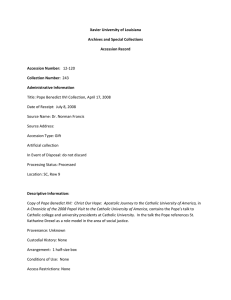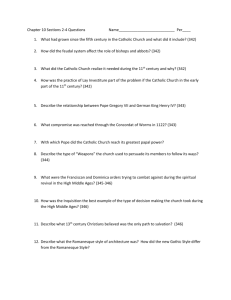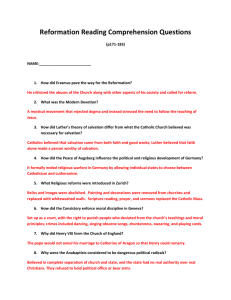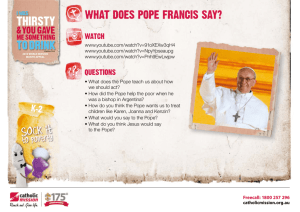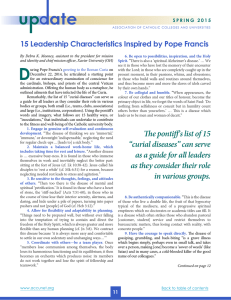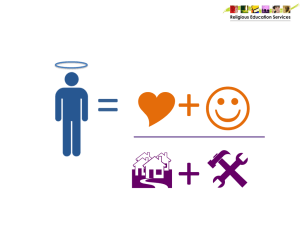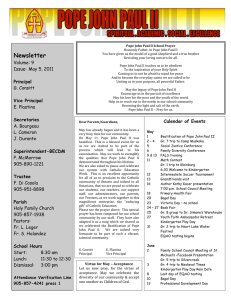Counter reformation and English reformation
advertisement
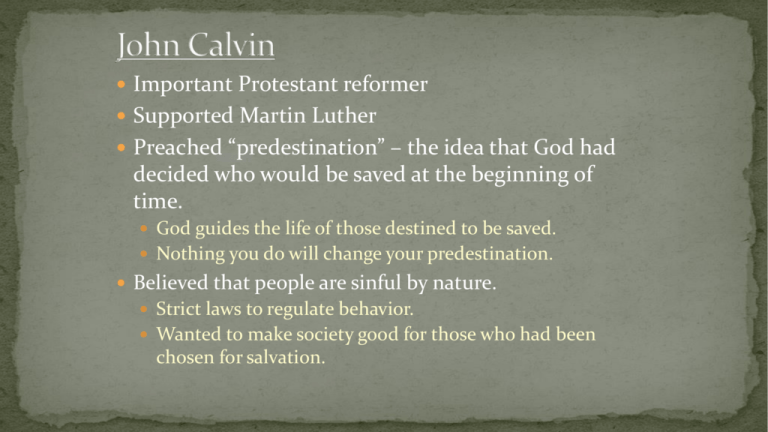
Important Protestant reformer Supported Martin Luther Preached “predestination” – the idea that God had decided who would be saved at the beginning of time. God guides the life of those destined to be saved. Nothing you do will change your predestination. Believed that people are sinful by nature. Strict laws to regulate behavior. Wanted to make society good for those who had been chosen for salvation. Luther’s stand against the Church opened the door for others to disagree with Church teachings. People expressed different ideas on religious matters. Lutheranism rose in Germany and different religious ideas began across Europe. King of England in 1509 and a devout Catholic. His wife Catherine had only given him a daughter and he wanted a son to inherit the throne. Decided to have his marriage annulled – made void; cancelled. The pope would not agree to this. Henry VIII withdrew from the Catholic Church and created the Church of England (Anglican Church) – the king was the head of the Church. Henry VIII divorced Catherine and married a total of 6 times. Henry VII did eventually father a son, Edward. Edward took the throne in 1547, but died shortly after. His sister Mary took the throne and returned power to the pope. Had many Protestants burned at the stake for heresy. Earned her the title of Bloody Mary When Mary died her half-sister Elizabeth becomes the Queen. Elizabeth was a Protestant 1559 she drafted the Supremacy Act which caused England to split from the Catholic Church for a second time. Catholics tried to have one of their people placed in the position of Queen, but were unsuccessful. Elizabeth persecuted the Catholics and secured the Church of England. 1530s – Catholics start a major reform effort known as the Counter Reformation. Began as an attempt to return the Church to an emphasis on spiritual matters. Also a campaign to stop the spread of Protestantism. The pope used Inquisition to put heretics on trial and impose harsh punishments. Created The Index of Forbidden Books. Since Gutenberg’s invention of the printing press literacy had increased and people were reading books that exposed them to ideas that differed from the Church. Anyone caught reading a forbidden book was accused of heresy & the books were burned. The pope knew the attacks on Protestantism would fail if Catholic doctrines were not clearly defined. 1545 Pope Paul III summoned church leaders to a meeting to define the Church doctrine. This meeting became known as the Council of Trent. Ended the sale of indulgences Tightened discipline within the clergy Claimed that salvation came from individual faith and participation in Church ceremonies Said that people must depend on priests because God only granted forgiveness through the Church Stressed that every person had free will – no predestination! During the Counter Reformation many Catholic religious orders reformed their rules, and new religious orders formed. One new group were the Jesuits, or Society of Jesus. Believed that salvation could be achieved by doing good deeds. Followers took vow of poverty, chastity, and obedience to the pope. Organized like a military and became the most effective agents in spreading Catholicism throughout Europe and parts of Asia. Combined humanist educational values with Catholic doctrines to produced educated & faithful Church members. Appearance of many different churches in Europe – denominations. Strong interest in education – many universities built; literacy increased. Increased power of the national government. Decreased power of the pope.
